Looking for information concerning different varieties of hawks across Colorado? Here’s an ultimate guide to different stunning species of these raptors!
Hawks are predatory birds that are members of the Accipitridae family. These magnificent birds range in size and occupy a variety of environments, including woods, grasslands, mountains, and deserts.
Muscular legs, curved beaks, and keen claws are common characteristics of these birds. Hawks are diurnal and magnificent predators. When hunting prey for the kill, they are also recognized for their signature ‘dives.’
There was a lot more about this bird species than catches the eye, which is perhaps why they’re so popular with birders all around the planet.
However, today’s article will concentrate on hawks local to Colorado. Hence, Centennial State citizens, this is the one for you!
| Image | Name |
|---|---|
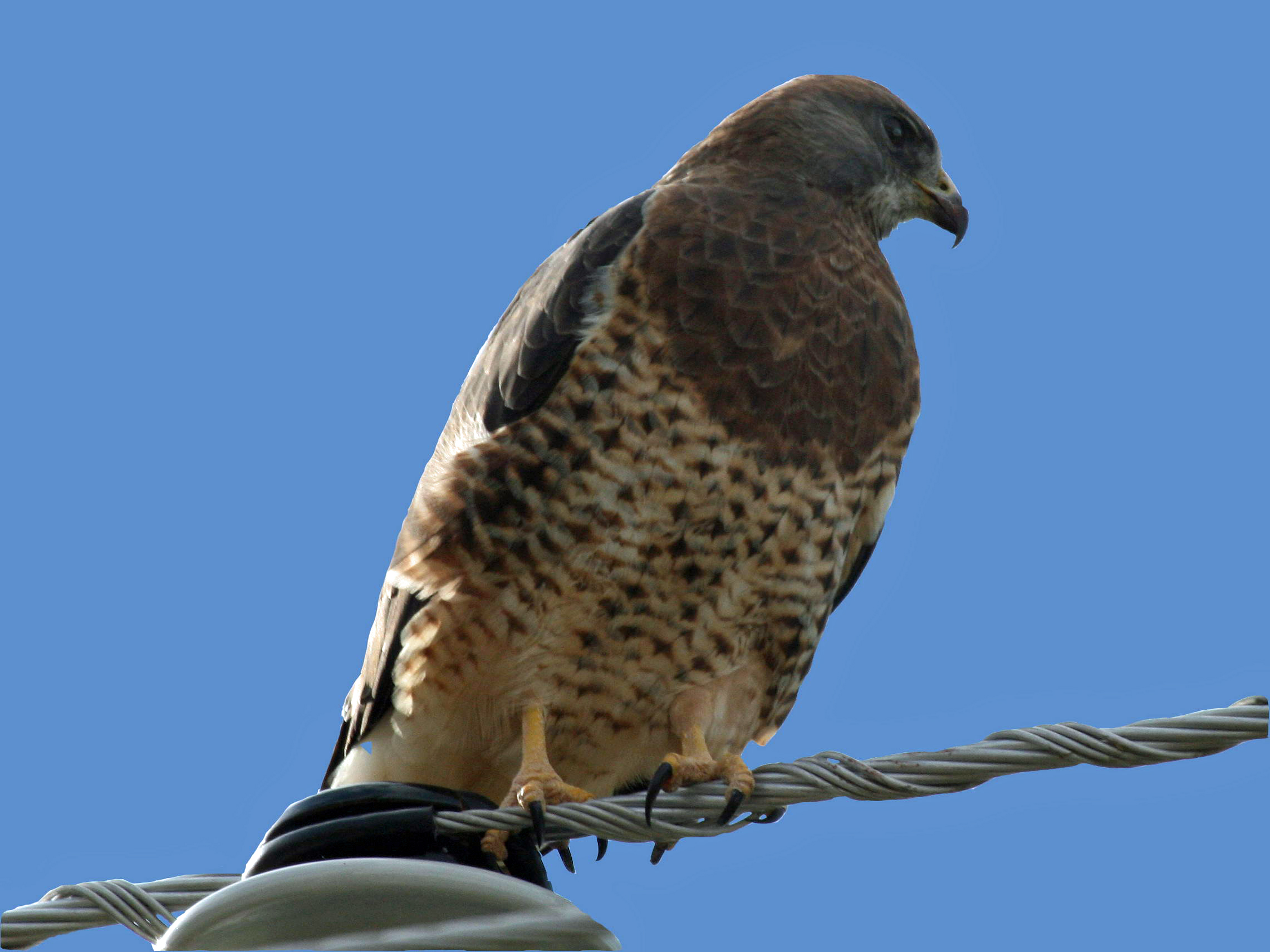 | Swainson’s Hawk |
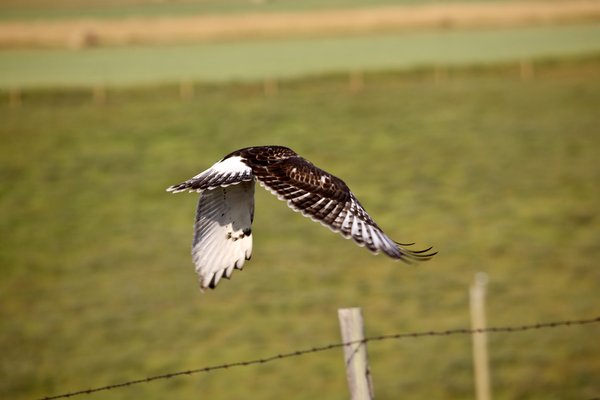 | Ferruginous Hawk |
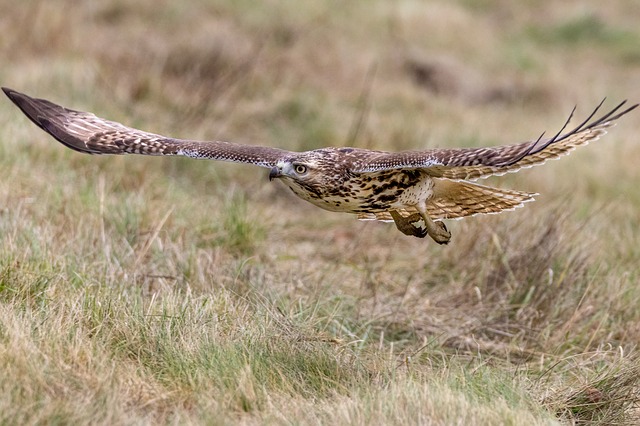 | Red-Tailed Hawk |
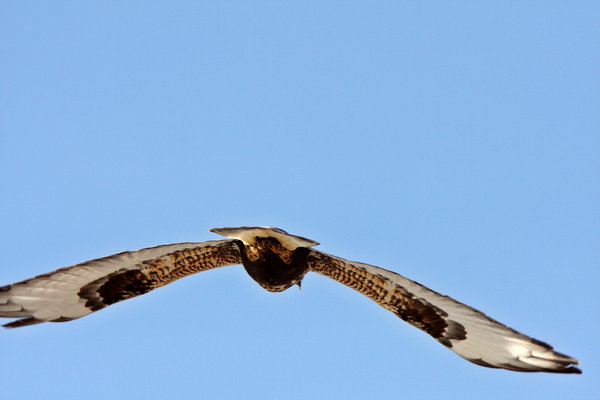 | Rough-legged Hawk |
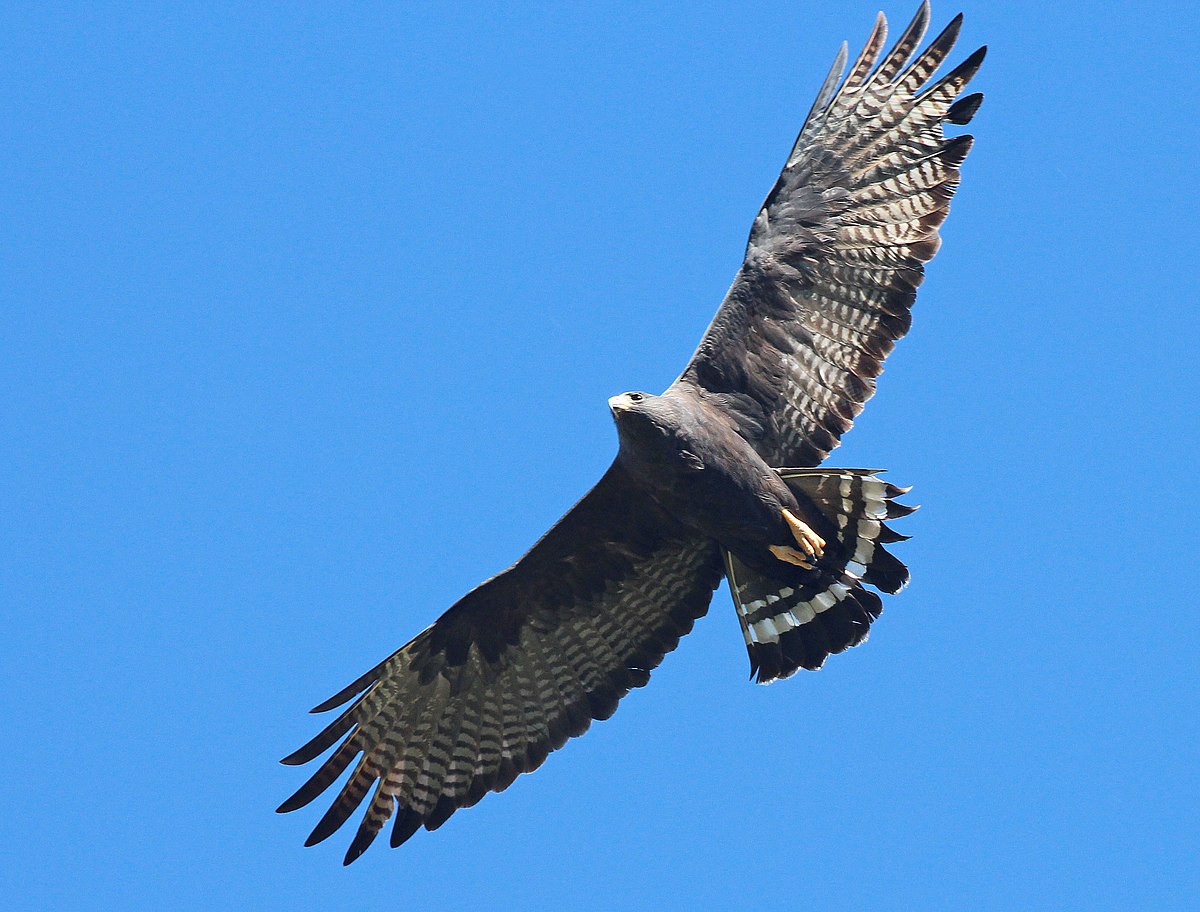 | Zone-Tailed Hawk |
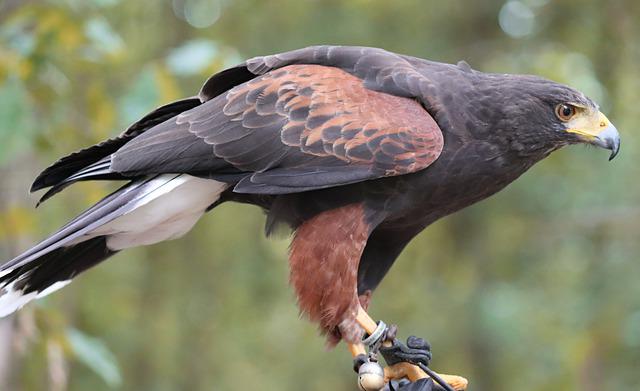 | Harris’s Hawk |
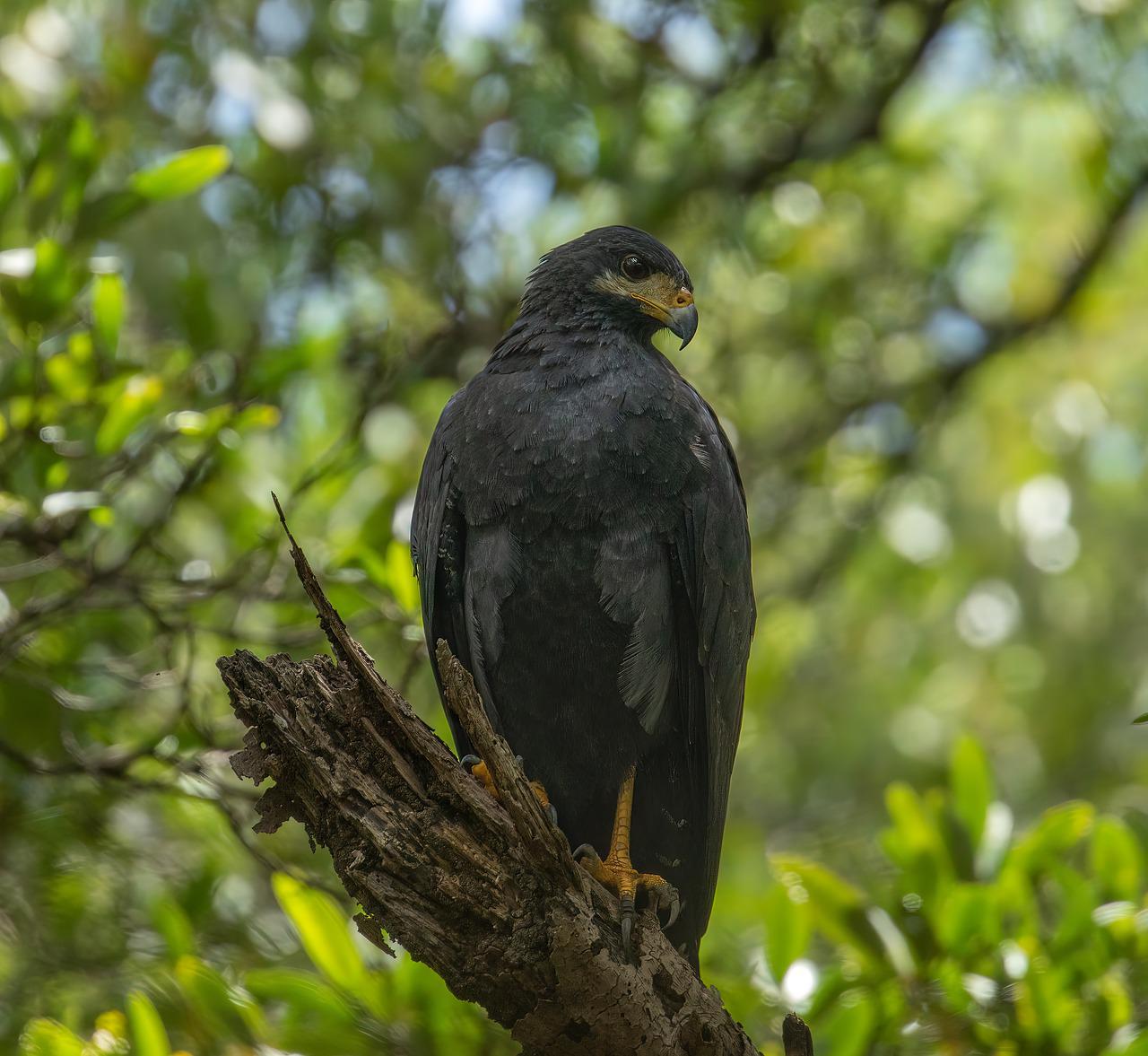 | Common Black Hawk |
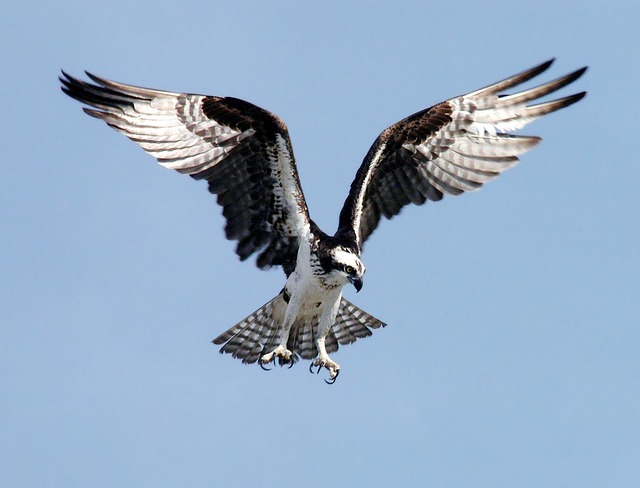 | Osprey |
Different Species of Hawks in Colorado
Colorado is home to approximately 17 hawk species, making it tough to choose which one to include in our guidebook.
Nevertheless, we’ve chosen a few different and one-of-a-kind species that are guaranteed to excite the bird lover in you. Furthermore, hawk spotting Colorado will get much easier for our viewers since we’re trying to incorporate information about behavior, appearance, and habitat!
1. Swainson’s Hawk
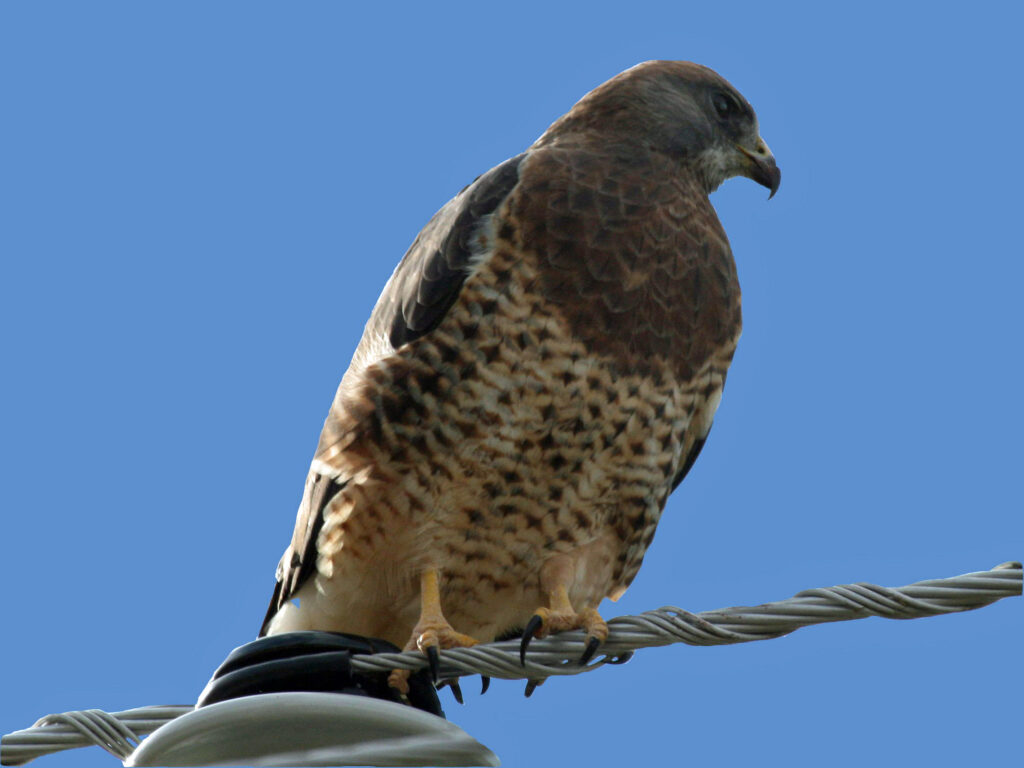
The Swainson’s Hawk seems possibly the one and only species throughout Colorado that travels the 6000-mile journey to South America from the Prairies.
These creatures are incredible. Did you also know that Swainson’s Hawk migrates at a rate of roughly 126 kilometers each day? The greatest places to see this species within Colorado are near the mountain ranges and the lowlands in the east.
| Scientific Name | Buteo swainsoni |
| Length | 46 to 56 centimeters (18 to 22 in) |
| Wingspan | 117 to 137 centimeters (46 to 54 in) |
| Weight | 680 to 1360 grams (24 to 48 oz) |
Adults have speckled underparts and dark brown plumage on their heads and bellies. Another distinguishing trait is that their wingtips usually reach their tails when sitting.
Swainson’s Hawk juveniles have reddish-brown plumage on the breast and white underbellies and cheeks.
In terms of diet, this type prefers mice, voles, songbirds, squirrels, gophers, and rabbits. If you live anywhere near them, you should buy some coverings for your garden suet feeder so that the thrushes on your grass shouldn’t become a target.
2. Ferruginous Hawk

The Ferruginous Hawk would be a lovely second on our checklist of Species of Hawks throughout Colorado.
One characteristic that distinguishes this species is that this is one of the largest species of hawk – not only in Colorado but also in North America. Buteo regalis, which implies royal hawk, might be its scientific name.
The species’ shape varies, with youngsters generally light. Adults could be either dark or light overall color, having dark brown body plumage and white underbellies, pale crimson tails, and deep brown wings.
| Scientific Name | Buteo regalis |
| Length | 51 to 69 centimeters (20 to 27 in) |
| Wingspan | 1.2 to 1.5 meters (47 to 60 in) |
| Weight | 900 to 2270 grams (2 to 5 lbs) |
The species is quite skilled in nest-building and may construct nests on cliffs, trees, or man-made buildings.
Prairie dogs are a favorite food of Ferruginous Hawks (which are an endangered species). Furthermore, this endangers the Ferruginous Hawk species.
In addition to prairie dogs, the variety hunts rabbits, reptiles, hares, and squirrels.
3. Red-Tailed Hawk

The Red-tailed Hawk is perhaps the most common raptor throughout North America, which is perhaps why this is one of the simplest to detect.
It even has Sixteen subspecies that vary in size, tail patterns, and color. Harlan’s Hawk, for instance, is a subspecies of the Red-tailed Hawk.
The animal is easily identified by its red tail, which also gives rise to its nickname. The species’ males also have white undersides and yellow feet.
| Scientific Name | Buteo jamaicensis |
| Length | 45 to 65 centimeters (18 to 26 in) |
| Wingspan | 110 to 140 centimeters (43 to 55 in) |
| Weight | 700 to 1600 grams (1.5 to 3.5 lbs) |
Red-tails are well-known for their mating behavior, in which the males try a series of quick dives and capture the ladies using their talons. Red tails can also pair for a lifetime and scavenge in couples.
The species prefers to nest in trees or even on man-made buildings. They also have a diverse ecological distribution, frequenting wide-open places, deserts, woods, and so on.
Rats, voles, reptiles, mice, and birds such as quails and pheasants make up the species’ diet.
4. Rough-legged Hawk

Rough-legged Hawks have by far the most varied feathers. That implies that some individuals are pale, having white or cream highlights, while others are practically totally black.
There is also a lot of sexual phenotypic variability in the species. Adult males possess banded undersides and narrow dark stripes towards the tips of their tails.
On the other hand, females get a single black stripe across the tail ends and wings, as well as a dark lower side.
| Scientific Name | Buteo lagopus |
| Length | 46 to 59 centimeters (18.5 to 23.5 in) |
| Wingspan | 132 to 138 centimeters (52 to 54 in) |
| Weight | 715 to 1400 grams (25 to 49 oz) |
Rough-legged Hawks are frequently referred to as ‘nomadic’ since they migrate based on the availability of food.
The species passes most of its time across Canada and the Arctic, but it can be found throughout Colorado in the wintertime.
These hawks tend to feed on rabbits, lemmings, voles, squirrels, and birds.
5. Zone-Tailed Hawk
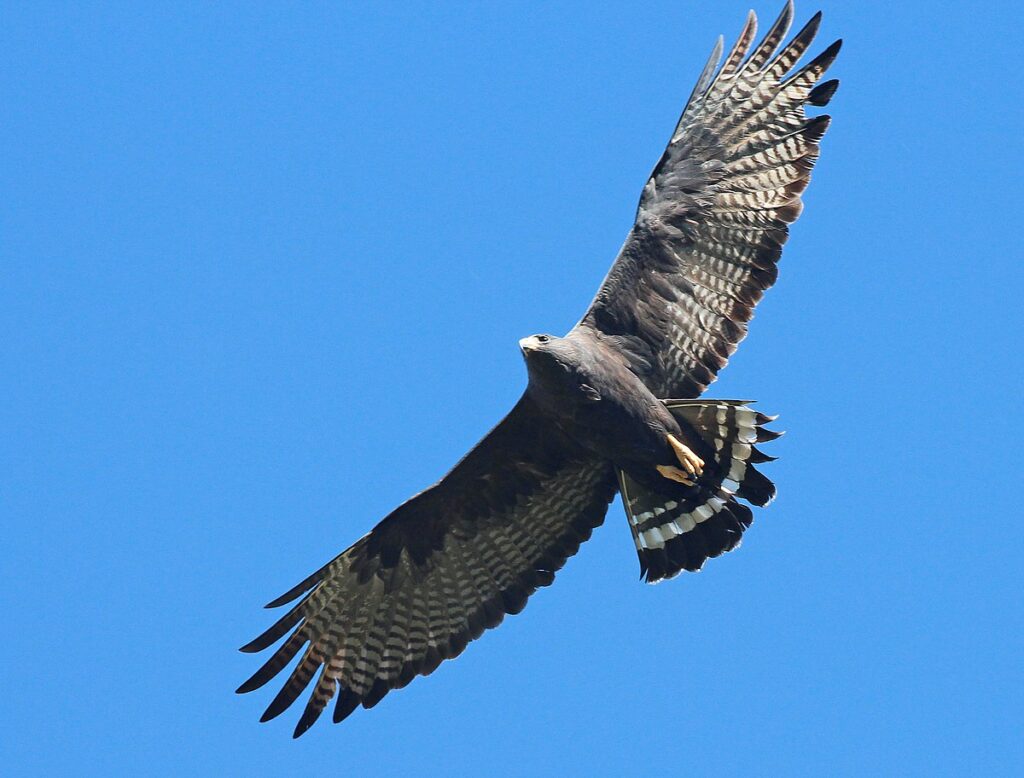
Zone-tailed hawks possess lengthy tails and are similar in size to Red-tailed hawks. Grayish-black hawks have white and black banded undersides. They prefer to fly lower and gently above the trees.
The Zone-tailed hawk prefers to attack its prey from low altitudes. This hawk loves high-altitude deserts, mountain pine woods, and foothills. That’s why Colorado, California, and other southwestern regions are ideal places to live.
| Scientific Name | Buteo albonotatus |
| Length | 18 to 22 inches |
| Weight | 1.3 to 2.1 lbs |
| Wingspan | 30 to 31 inches |
The hawks listed above are more prevalent in Colorado than those that we could not include. Because of Colorado’s diverse scenery and environment, numerous species of hawks as well as other birds make it home or stop by while migrating.
6. Harris’s Hawk

The Harris’s hawk has a distinct look, being predominantly dark with reddish wings. It has black and white tail feathers and white stripes on its wings. This hawk enjoys hunting small animals and rodents.
| Scientific Name | Parabuteo unicinctus |
| Length | 18 to 23.2 inches |
| Weight | 18.2 to 31 ounces |
| Wingspan | 41 to 47 inches |
Harris’s hawks are sociable predators who will band together with other hawks and exchange food among themselves.
Together, Harris’s hawk will defend a region. This hawk is seldom seen across Colorado, although you could see it in the state’s southwestern sections during December and February.
7. Common Black Hawk
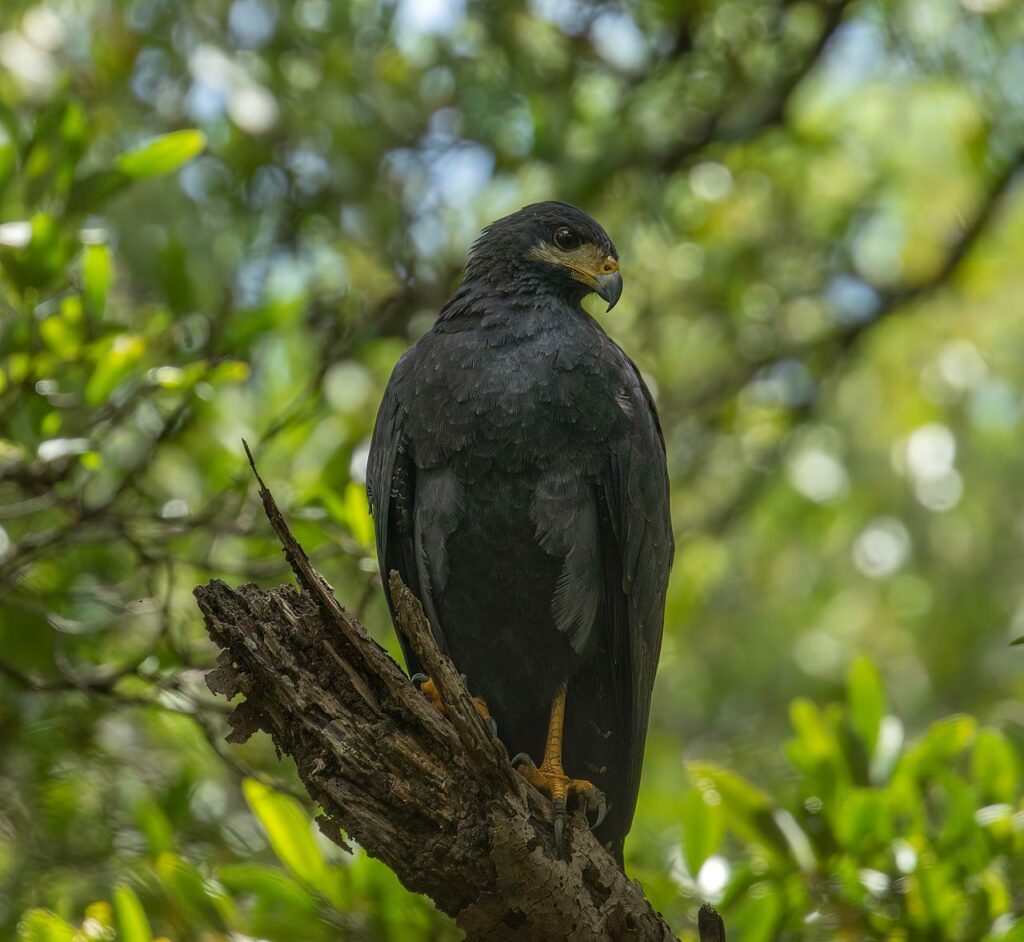
This solid black hawk could be spotted along rivers and small water bodies throughout southern Colorado. The Common Black Hawk is just a large bird with wide wings. They attack from low perch in trees, gliding down to seize their prey using their strong claws.
| Scientific Name | Buteogallus anthracinus |
| Length | 20 to 22 inches |
| Weight | 1.5 to 2 pounds |
| Wingspan | 48 to 52 inches |
They prefer to build their nests among tree groves, mainly of sycamores or cottonwoods. This hawk is sensitive to habitat destruction caused by human activities.
When there is too much social disturbance, mostly around their nesting territory, common black hawks might leave it.
8. Osprey (Fish Hawk)

Every one of the hawks I have mentioned thus far might devour the three R’s (rodents, reptiles, and rabbits). Not Ospreys, which are not “real owls.” These vulture-like hawks eat mostly fish.
They’re constructed for it, too, having opposable claws for added traction on slippery fish.
| Scientific Name | Pandion haliaetus |
| Length | 21 to 22.8 inches |
| Weight | 1400 to 2000 grams |
| Wingspan | 59.1 to 70.9 inches |
Furthermore, Ospreys are bigger and have longer wings than Red-Tailed Hawks, which are just slightly longer.
They are known as the whitest hawks since their underparts are completely white. Only its extremely large wings and a brown band between the eye and middle of the skull are black.
The Osprey’s cry is really sweet and stylish.
Conclusion
That’s all there is to it. We’ve given you plenty of information about several of Colorado’s most unusual hawks. Each one of the varieties in our collection has a distinguishing feature. And we hope you’ll be on the lookout for these birds the next occasion you go there to study the regional avian community.
If you have a favorite hawk species which frequents Colorado, please share your thoughts with us. We are waiting to hear from everybody. Maintain your gaze fixed on the horizon until your next visit!
FAQ
What is Colorado's largest bird of prey?
The Ferruginous Hawk Ferruginous Hawks are stunning birds that inhabit the West’s vast deserts and plains. They are among Colorado’s biggest birds of prey, with wide broad wings as well as a wide gray, rusty, or white tail.
Is there a hawk or a falcon in Colorado?
Red-Tailed Hawks are by far the most common type of hawk throughout Colorado and among the most frequent hawks across North America. They are normally simple to detect due to their big size and striking red tail feathers.
Last Updated on March 22, 2023 by Lily Aldrin
